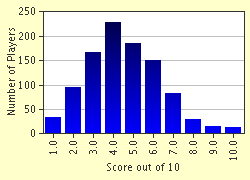Quiz Answer Key and Fun Facts
1. What is the average weight of the adult human heart?
2. The cardiac output (CO) is equal to the heart rate (HR) times the stroke volume (SV) per beat. At rest with a heart rate of 72 beats per minute (HR) and a stroke volume (SV) of 55 milliliters (ml)of blood per beat, how much blood would flow through the heart in 24 hours?
3. The left ventricle pushes the blood into the aorta against considerable resistance. What is the pressure exerted by the left ventricle contracting called when measured during a physical examination?
4. In order for the blood to flow through the heart in only one direction there are four heart valves. What is the name of the heart valve that prevents the blood from flowing from the left ventricle back into the left atrium?
5. Normally the veins carry low oxygenated blood from the capillaries back to the heart. What are the only veins in the human body that regularly carry highly oxygenated blood?
6. Where are the sinuses of Valsalva located?
7. What is the first branch of the left coronary artery?
8. From one heart contraction to the next contraction, what percent of the time for this cycle is the heart in the diastolic (non-contractile) phase?
9. What is the mean arterial blood pressure in a person whose systolic blood pressure is 162 mm. Hg. and whose diastolic blood pressure is 120 mm. Hg.?
10. In the human fetus what is the anatomical characteristic of the heart and main cardiac vessels that prevents blood passing to the lungs of the non-breathing unborn child?
Source: Author
YOMD39
This quiz was reviewed by FunTrivia editor
rossian before going online.
Any errors found in FunTrivia content are routinely corrected through our feedback system.

